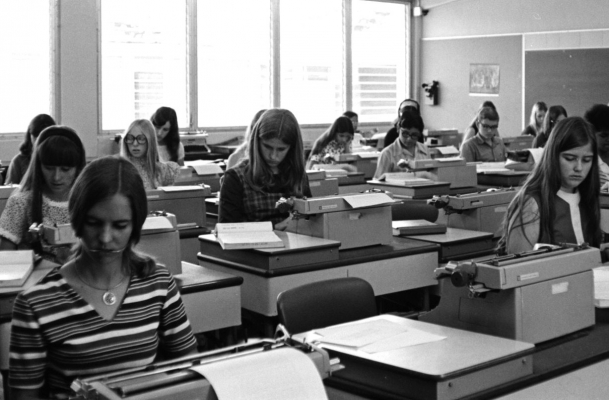Workplace & School
Typing class in high school
These were considered business vocational courses, and were generally taken by girls who aspired to be secretaries. Nowadays, everyone needs to know their way around a QWERTY keyboard.
Typing class in high school
These were considered business vocational courses, and were generally taken by girls who aspired to be secretaries. Nowadays, everyone needs to know their way around a QWERTY keyboard.
Registered users can log in to post comments or submit items for the galleries.
There are 4 comments for this item.
Oh, by the way, I successfully kicked those Elmer's glue eating and purple ink sniffing habits long before high school.
Registered users can log in to post comments or submit items for the galleries.